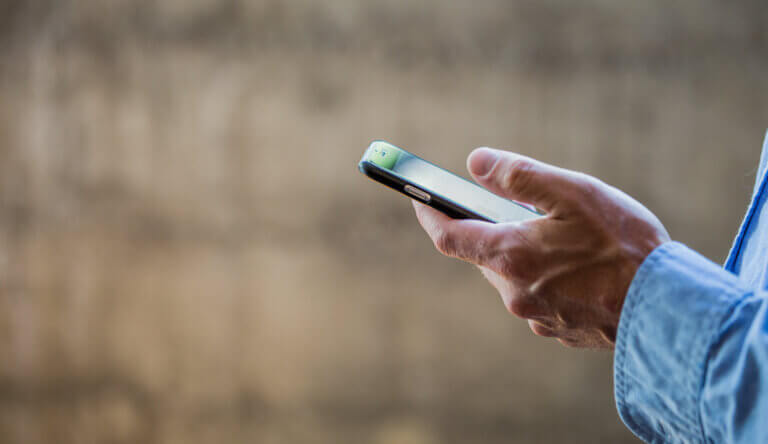
Urban Airship Rockets Past One Trillion Notifications Delivered

Brett Caine CEO
As we take a look back as well as a look forward, walk down memory lane with us in this video we put together. Push notifications have come a long way. And, as Brett outlines in this post, they’re just getting interesting…
There hasn’t been a major world event in the last several years that wasn’t first published as a notification. We’ve been there for all of it, from “balloon boy” to Brexit. Hundreds of millions of people instantly in-the-know — from the tantalizing to the tragic — and this stream is increasingly curated by them and by all types of apps tuning into their signals across digital and physical channels.
What started as humble gameplay mechanics and “needy” app reminders, is now the key to a range of experiences — from livestreaming to augmented reality — that would flounder without notifications. Notifications are a central experience for smartwatches, and often the only always-active user interface for IoT devices. Notifications will prove to be a key enabler for chatbots and intelligent personal assistants — which must also transcend the web’s model of being at people’s beck and call, to proactively and predictively serve them.
Urban Airship powered the very first notification from a third-party app for Tap Tap Revenge on June 17, 2009.
The Path to One Trillion Notifications
Today, we’re particularly proud to have delivered our one trillionth push notification for customers. Growth toward this milestone has accelerated dramatically in the past few years. It took Urban Airship seven years to hit 500 billion notifications. Now, in less than a year, we’ve doubled that. Quarter-over-quarter growth is staggering. For example, on Election Day (Nov. 8, 2016) we set a new daily record delivering 2.5B notifications. Now we hit or surpass that daily volume often.
A trillion is one of those numbers that is immediately recognized as huge, but it’s so enormous that it lives in the abstract, lacking a tangible reference point to understand its scale. Here are a few interesting ways to wrap your head around it:
-
One trillion seconds ago is 31,688 years ago
-
One millimeter (mm) is tiny, one billion mm is the distance between San Francisco and Salt Lake City, one trillion mm stretches around the world 25 times
-
One trillion bricks could build the Great Wall of China 258 times
-
It’ll take the 26,000 trees in Central Park 769 years to produce a trillion leaves
We didn’t even count everything we send, only notifications sent to app users’ lockscreens — the most valuable marketing and engagement real estate on the planet. We also send in-app notifications, message center messages and notifications to Apple News, website visitors, mobile wallet passholders and other digital marketing channels like email and SMS.
Forrester recently acknowledged our massive scale saying, “… Urban Airship sends more push notifications per month than about 10 of the smaller vendors combined” (Forrester Research Inc., “How To Choose A Mobile Messaging Vendor,” April 10, 2017). Note: copies of this report are available for a limited time.
Notifications Can Make or Break Engagement with Customers
One trillion push notifications lit up a lot of device screens, many with audible cues or vibrations to solicit immediate attention. Unlike other channels like email, where a recent global benchmark report found the key to improving email engagement is sending fewer emails, a greater volume of notifications done right can have a positive effect on user engagement and retention.
-
In 2014, we supported the official app for a major, month-long sporting event, sending 1.9 billion notifications—all of which were targeted to fans’ favorite teams.
-
In 2016, a fourth annual study of retail apps during the holidays found notification volume increased for the third year in a row, as did average notification opt-in rates and average notification engagement rates.
-
In 2017, a study on app user retention rates found that new users who received frequent, in-the-moment notifications were retained at rates 3-10X higher than those who didn’t.
Why Notifications Are the Future
At the highest level, there are three great things about notifications and why they’ll have an even more dominant role in the future:
-
User-Controlled: They are the ultimate opt in and, with a longpress and a tap, needy apps can be jettisoned; or, with a little more effort, notification privileges revoked.
-
Personalized: They can be highly contextual, curated by you and your data, to only serve up what you need, when and where need it. This will only get more magical as companies shed channel-centric mindsets and emphasize customer service and utility over broad promotions.
-
In-the-Moment: Notifications can be consumed in a glance, acted on in a tap or otherwise ignored, providing a lightweight yet powerful form of communication.
Preparing for Even Greater Heights
Advancements in mobile are bringing richer and individualized experiences to the notification paradigm. Notifications can now include rich media (video, photos, GIFs, audio) and interactive buttons to share, read later or react, offering deeper engagement and actionable data from the lockscreen. Rich notifications can also serve up live status updates from apps to provide real-time utility within the message. This, along with app actions exposed as notification buttons and apps connecting to each other through extensions, are key developments in re-imagining the value they can provide, whether opened or not.
With all this content and an increasing need to communicate with hundreds of millions of consumers daily on a one-to-one basis, businesses require highly scalable and reliable platform services. This need will only grow as more apps implement push notifications and adopt new rich, interactive styles (get the latest adoption data in Forrester Research’s April 2017 report, “The State of Mobile Marketing Tactics”). Note: copies of this report are available for a limited time.
Even more than that, 10 years of app user experience is now bleeding to web browsers and checkout lines, your messaging apps and inside your cars and homes. Notifications are coming to meet you wherever you are, and help businesses broaden their direct reach to customers. The list is long, but some of the initial ones we’re helping to address include Apple Pay and Android Pay, Apple News and Apple TV, as well as Android Things and chat messaging services. Our open approach to data and integration means we’ll be able to address new experiences and platforms as they emerge.
We’re proud of today’s milestone, however, our goal is to enable a future where companies meet consumers wherever they are to serve them on their terms and in anticipatory ways. As notifications take hold of the future of digital messaging, these scenarios demand real-time engagement models to not just be relevant and immediately useful, but to help make people’s lives easier, add value, be more human and even be a bit magical.
We’re looking forward to the next trillion notifications as we help businesses reach the right customer at the right moment with the right message, wherever that may be.
We’ve been there since the beginning, and we’re thrilled to be building the future of notifications with brands of all sizes all over the world. Schedule a personalized demo today and see how we can help you connect with your customers in real time with personalized notifications at every step in their journey — across all channels and devices.
Subscribe for updates
If the form doesn't render correctly, kindly disable the ad blocker on your browser and refresh the page.
Related Posts


Digital Growth: The Shift to In-the-Moment Communication
